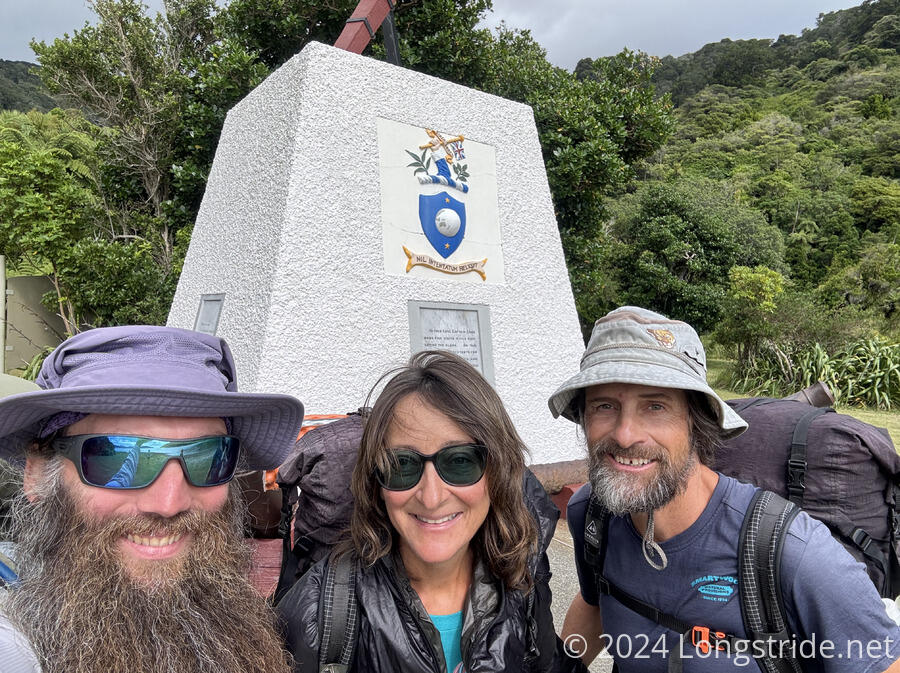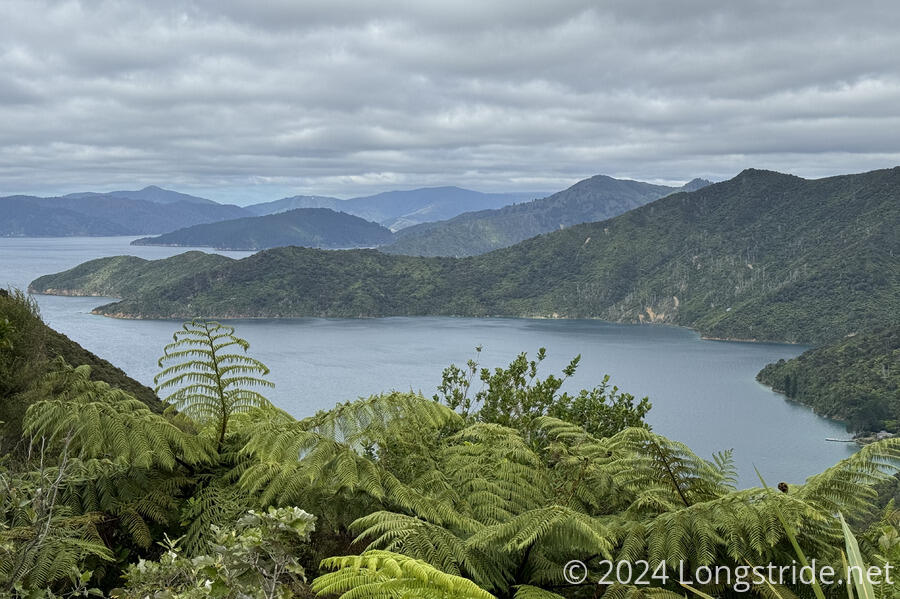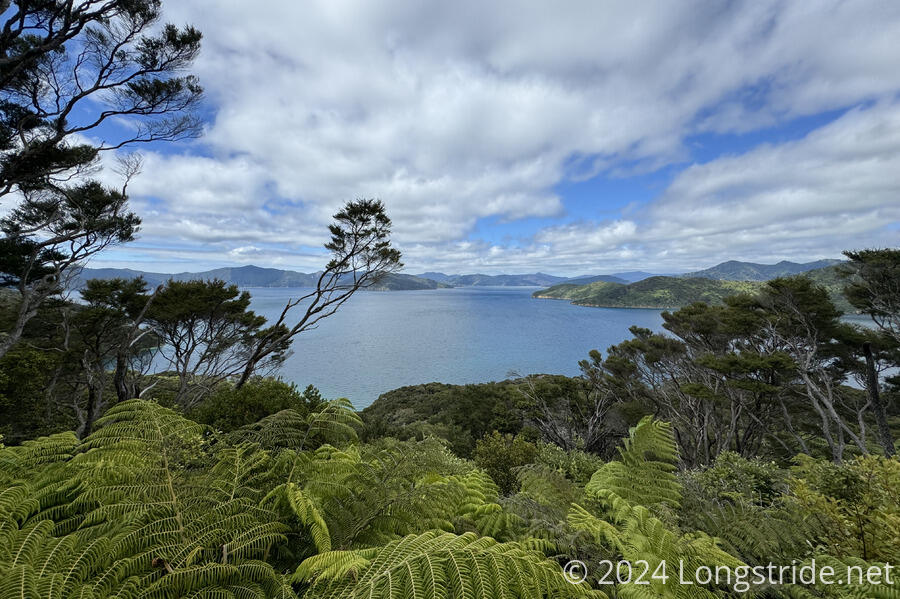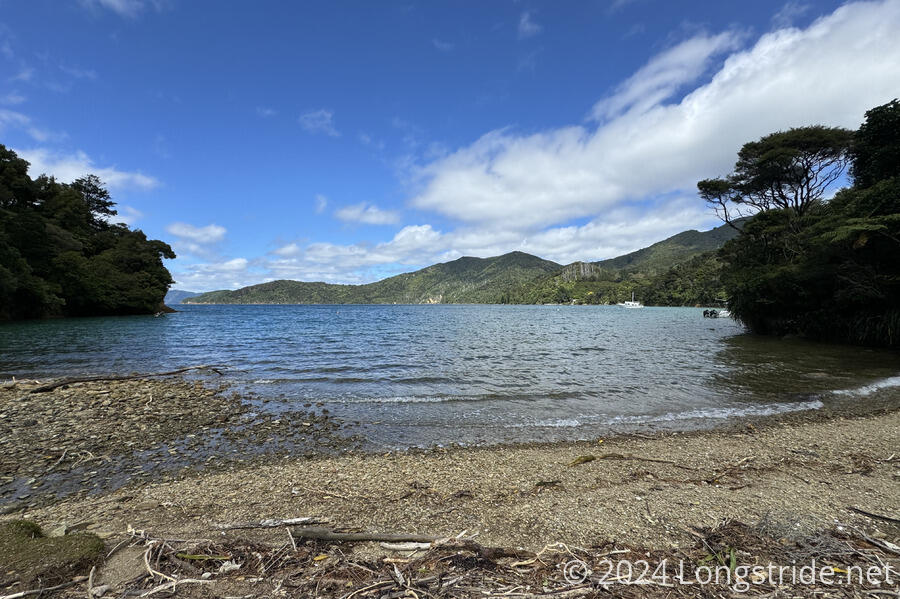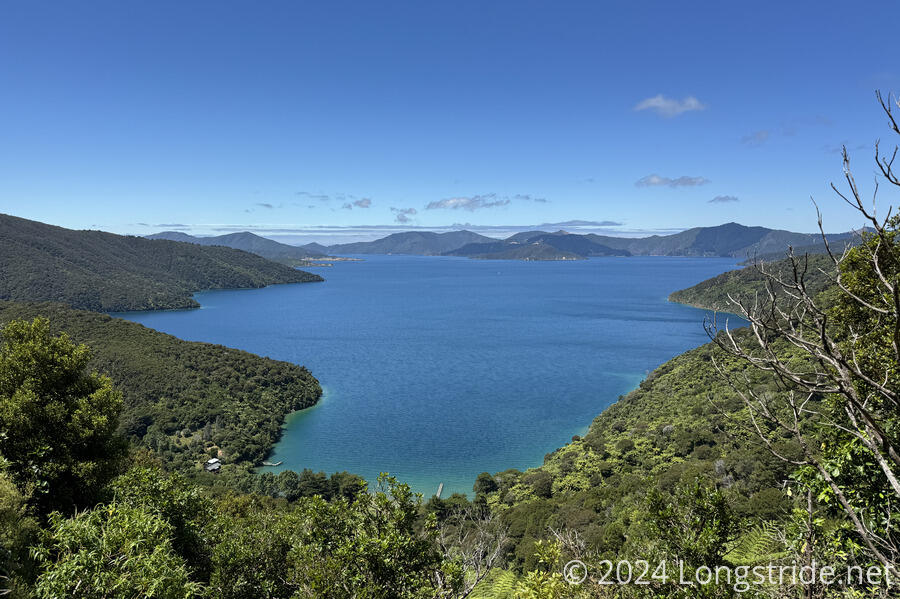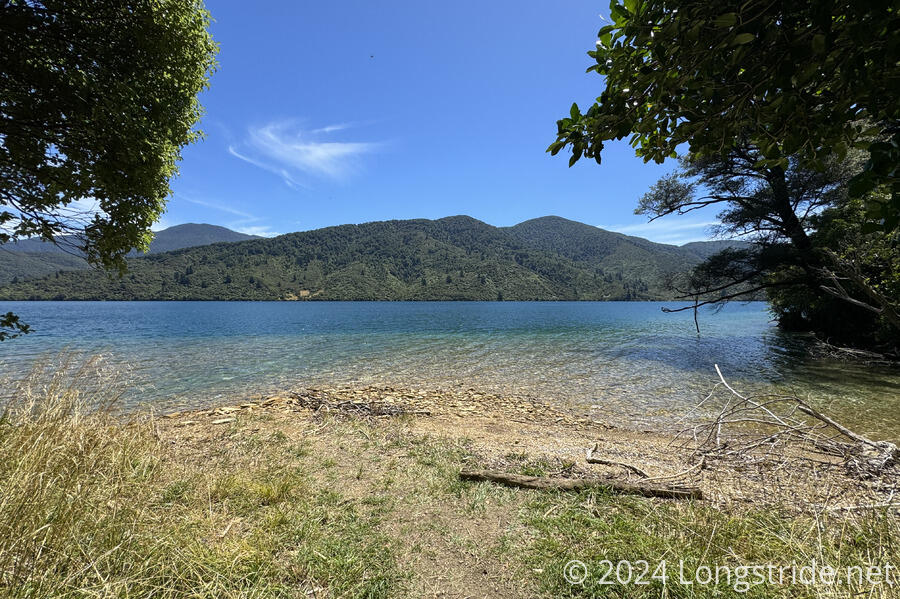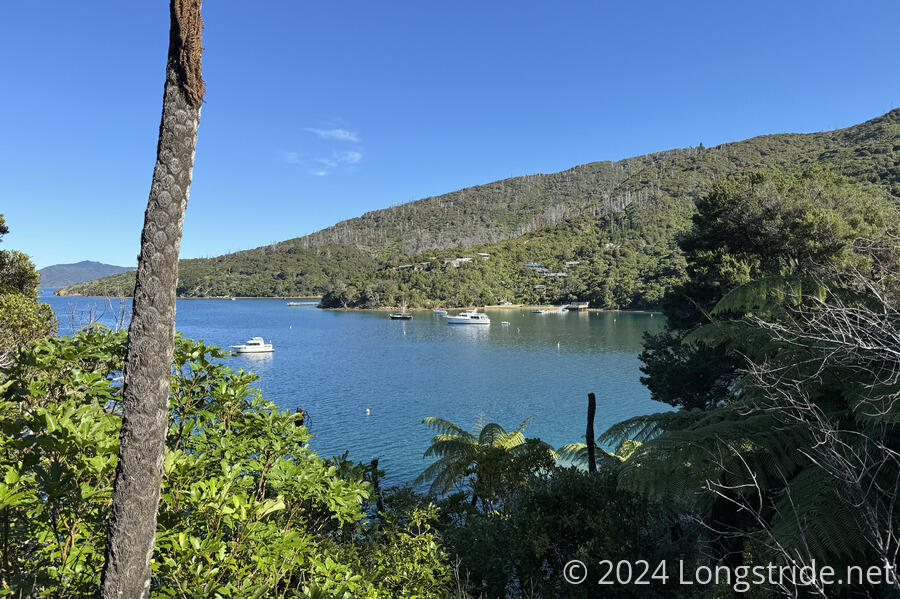Today, I started Te Araroa on the South Island, beginning with the Queen Charlotte Track.
Some wind gusts last night kept things interesting, but my tent, despite being pitched somewhat comically tall, managed just fine. Possibly due to the wind, there was also no condensation, which was a nice bonus.
I got up a little later than I’d planned, but was all packed and in the holiday park’s kitchen for breakfast shortly after 7. I was in no rush. Susanna, Peter, and I scheduled a 9 am water taxi with Beachcomber to Ship Cove, so I didn’t need to leave until 8 am to get there (with plenty of leeway) for check-in at 8:30.
Hannah surprised us again while we were waiting for our boat, but didn’t quite stick around to see us off; by then it was nearly 9, and she hadn’t had breakfast yet.
Our water taxi, Matua, took us just over an hour to reach Ship Cove, making a short stop along the way at a small island, Motura, to take on three passengers. During the trip, our pilot, Jason, told us about some of the history of the area. In particular, about how the forests around Queen Charlotte Sound are in the midst of a decades-long restoration program to rid them of “exotic” (North American) pine trees and regrow native forests. After millions of pine trees had been planted in the 1900s, they’re now halfway through a 40-year program to poison them all. (This is to ensure that the trees and their seeds are non-viable; just cutting the trees would leave seeds and stumps that might regrow.) As the pines die, native forest species can take over, though to truly bring back the native forest (and the vast number of birds that come with it), predator mammals (like possums, stoats, and rats) must also be eliminated.
At Ship Cove stands a monument to James Cook, the first European to reach New Zealand. The cove was where he anchored his ship on his first, and subsequent two, voyages to New Zealand. His initial mission was to observe the transit of Venus in Tahiti, then search for a southern continent. Susanna, Peter, and I (and most everyone else on the water taxi) visited the monument, which had to serve for us as a South Island Northern Terminus marker, since we couldn’t otherwise find one.
While the main body of water the trail “follows” today is the Queen Charlotte Sound, the trail visited or overlooked several of the Sound’s bays. Of course, it started with Ship Cove. Next was Resolution Bay, named after Cook’s lead ship on his Second Voyage. Beyond that was Endeavor Inlet (named after the ship on his first voyage), which had a number of sub-bays itself.
Starting off on the Queen Charlotte Track, the trail was immediately obviously much better than most trails on the North Island. For most of the day, I made quick progress, except when the trail was occasionally steep.
The forest was much louder than I recalled North Island forests being. Insects made up the bulk of the noise, with cicadas forming a background chorus and something else making a clicking sound like a Geiger counter. Birds rounded out the sound of the forest, though there were less of them than I’d have expected. (Historical reports from Cook’s time suggest that just the birds themselves were incredibly loud.)
From a saddle above Ship Cove, I could see Resolution Bay as well. Schoolhouse Bay, my first campsite on the South Island, is on that bay.
I took my first break at a picnic table near the water at Schoolhouse Bay, part of Resolution Bay. Peter and Susanna had gotten there shortly before me. While they were making sandwiches, a particularly bold weka stole some of their bread. Wekas are brown birds, roughly chicken-sized, and especially known for their proclivity for stealing things. (In 2018, CareFree had a bag of trash stolen by wekas.) The main lesson is, keep an close eye on your stuff if there are wekas around.
The three of us had originally planned on ending our day at Schoolhouse Bay, but it wasn’t even noon yet, and all of us were quite ready and willing to go further. I set my sights on the campsite at Camp Bay, the next DOC campground. (Beforehand, I didn’t even consider hiking the 27 km to there; now, it seemed a very reasonable thing to do.)
I kept my break short; one of the lodges operating on the bay, a bit off-trail, has a cafe, and I intended to detour there for ice cream. Much to my dismay, a sign at the junction indicated the shop was closed! Oh well.
Peter and Susanna leapfrogged with me a few times on the next stretch. I stopped briefly to take in a beautiful little beach. The next beach past that, Peter found some large jellyfish that had washed up.
They stopped to get water at a creek next to a picnic table; I decided that was a good place for a break as well. They were looking at camping in a field indicated in our trail guide’s comments a few kilometers short of Camp Bay, on the Endeavor Inlet. I said I’d consider it if it looked worthwhile when I got there, but I’d gotten it in mind to just go all the way to Camp Bay, and that’s what I wound up doing. (I’m not entirely sure, but I think Peter and Susanna just didn’t want to go to Camp Bay because there would likely be a lot of people there.)
I flew down the generally very nice trail, taking in the scenery of the bays along the Queen Charlotte Sound, and got to Camp Bay just before 6.
After some hunting around for a campsite, I found one just off the water, in the forest surrounded with trees. (The alternative was an exposed grassy campsite near a couple of obviously non-TA tents.
While I was setting up, I chatted with a northbounder, who, like pretty much everyone else I’ve met who has South Island experience, said how much I’m going love the South Island, especially the Richmond Range. The trail today was pretty great by TA standards, and I’m definitely looking forward to the Richmonds, even if they’re supposed to be one of the hardest sections on the trail.
